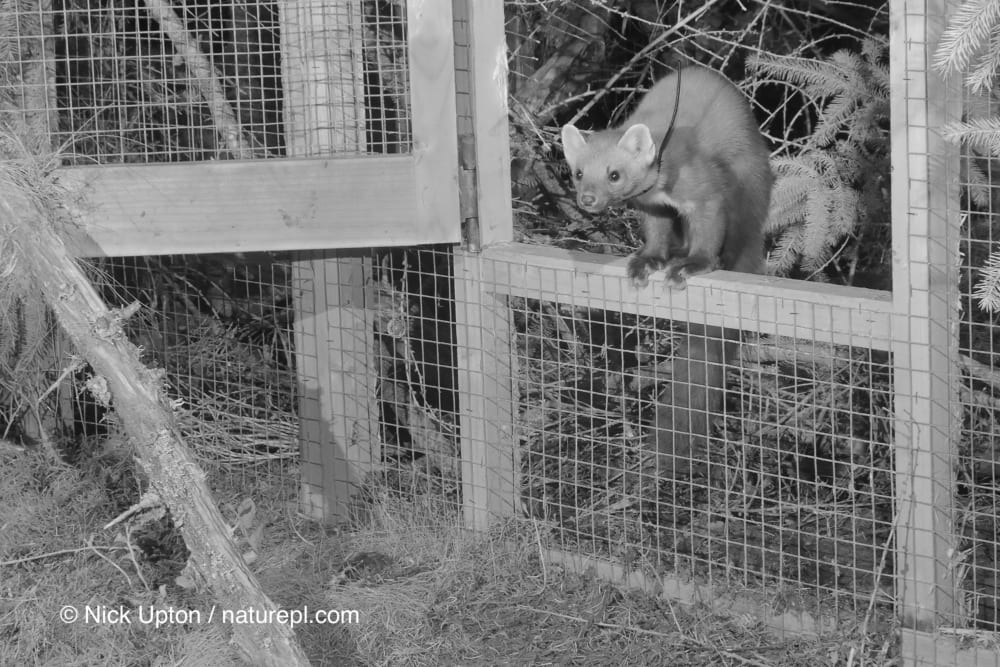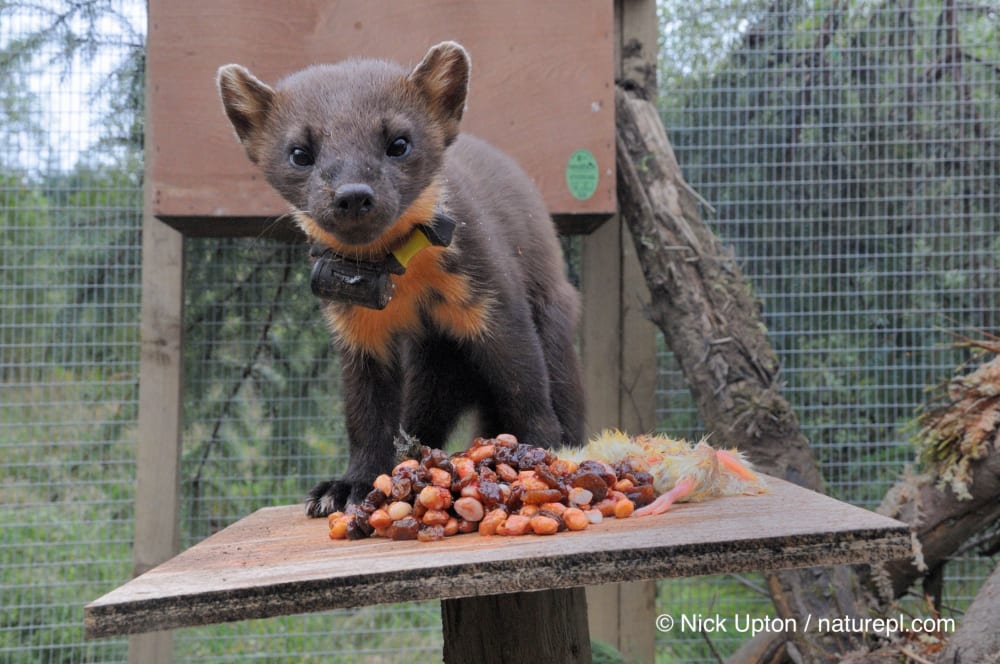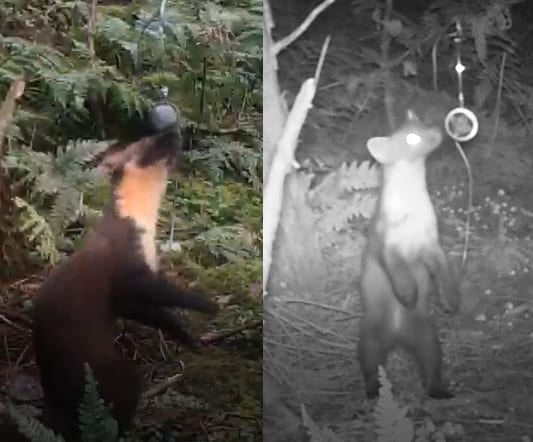‘Miss Piggy’ (officially known by the less fun, but more practical, PM07), was first translocated to Wales in mid-September of 2015. It’s been a busy three years for the Pine Marten Recovery Project team since then, and whilst we can’t have favourite martens, Miss Piggy is definitely the one that has made herself the most memorable.
She received her unusual name as she was been driven down from Scotland. Every three hours the van transporting the martens stops to offer them water and blueberries and whilst some of the animals can be very wary of people and will only eat once you have left, Miss Piggy showed no such qualms! She snaffled everything she was offered and didn’t seem at all bothered by her strange surroundings.
Once in her release pen she turned out to be very well named as most of our animals would have a period where they would hide in their box and would wait until they had the cover of darkness to come out and explore their pen and eat the food. Miss Piggy had no such reservations and was out and about within a few hours hunting out all the tasty treats we had left in her pen.

Once released she was the marten we could most regularly radio track and get on remote camera. If the team were having a bad night and all the martens had seemingly disappeared we would go to Miss Piggy’s territory as she was so reliable she would always be there to raise morale.
We didn’t expect her to breed that first spring after she was released as she was a very young animal and we suspected she wasn’t mature enough to have mated the previous summer in Scotland. After her collar was removed we monitored her via cameras sporadically as we kept a close track of the other females who were about to give birth.
Throughout the summer, during the mating season, she was caught on camera with PM17, the big male that overlapped her territory, several times. This made us hope that she had mated and would give birth to some little piggies the following spring. In May 2017, we littered her territory with cameras and hair tubes and checked all the den boxes eager to find out if she had given birth.

Unfortunately, all our efforts were in vain as she didn’t seem to settle into one maternity den site and we never had any confirmation of kits. It could be that she never actually mated, or that potentially the second tranche of releases disrupted the territories briefly or even that she did give birth to a litter but that they did not survive. Pine martens have a very high mortality as kits, with on average 50% not surviving to adulthood.
That summer, we again captured her on camera with PM17, but in May this year we were again disappointed when we checked denboxes there were no kits. The only intriguing evidence was a den box that was piled high with scats.
We monitored her cameras sporadically throughout the summer, but were convinced she hadn’t bred again until last month when we had to move a camera due to active forestry work!
We set it up in a new spot up the river from her normal territory where we had spotted some scats on the footpath. We baited the site and within a week had Miss Piggy turn up on camera. She’d do anything for some free peanuts!
We continued to check the camera throughout the month until one day we had a pine marten turn up who looked smaller, clumsier and generally different to Miss Piggy. What followed was then clip after clip of two pine martens together on camera, which is very unusual for this solitary species.
Our immediate thought was that these two were littermates from this year and so we deployed a jiggler, which is a tea strainer filled with peanut butter on a flexible wire that causes the martens to ‘meerkat’ up toward it, giving us a perfect photo of their unique bibs. This showed that indeed these two martens were new unknown martens and when they turned up on camera with Miss Piggy later in the month we knew they must be her offspring from earlier that year.

Hurray! The team were all thrilled. It is, of course, a celebration whenever we confirm any kits but these two felt especially important. Miss Piggy has been so closely followed by ourselves and Chester Zoo that it was very special to confirm that she has been contributing to the continuation of her species. K(07)1 and K(07)2 seem to share their mother’s love of food and regularly turn up on this camera so should be easy to keep track of over the next few years, until hopefully, they have their own offspring. That is a long way off though, so until then it just makes us happy to think of these three little piggies roaming about the Celtic forests.”
OUR TEAM OF EXPERTS WORK IN SIX REGIONS AROUND THE GLOBE – REPRESENTING SOME OF THE PLANET’S MOST BIODIVERSE HABITATS. Discover more about our SCIENCE AND CONSERVATION work.